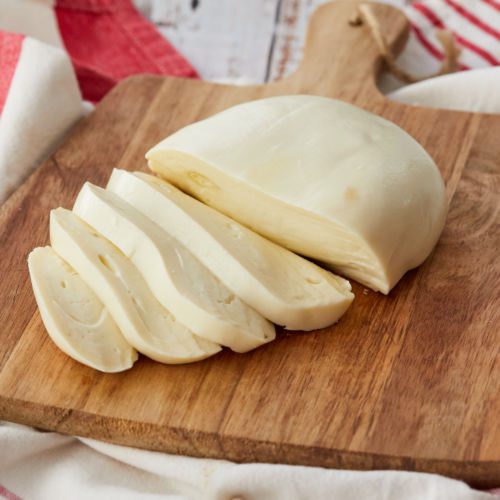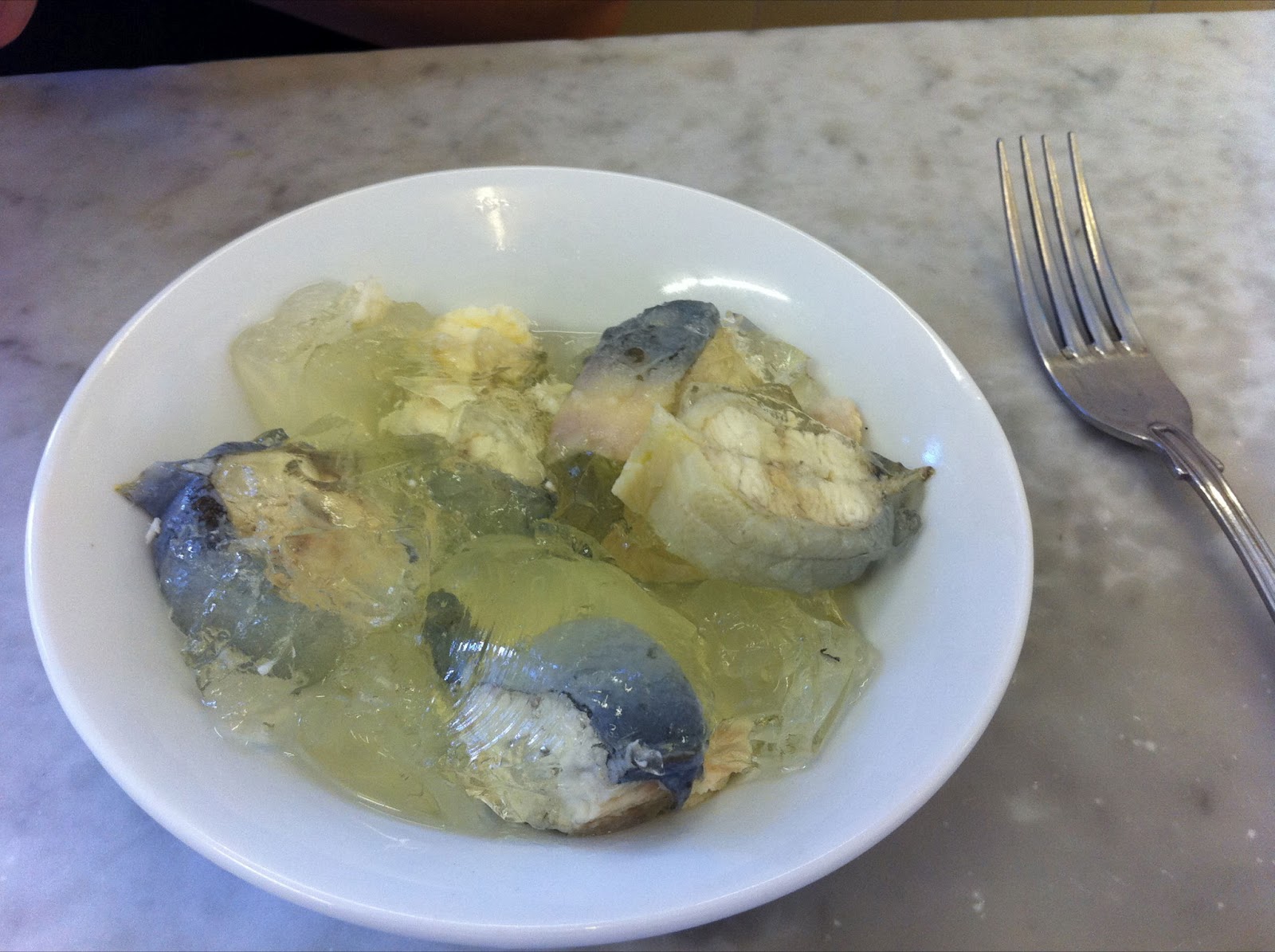Turkish delight, or “lokum,” is a yummy treat with a special taste. It’s soft and chewy, a bit like candy. The main flavors are sweet and nice, not too sugary. They use sugar, starch, water, and sometimes things like rosewater or nuts to make it extra tasty.
Imagine taking a bite, and it’s soft and a little bit chewy—really enjoyable! It’s like a burst of delicious sweetness with a hint of special flavors. People who like treats that are not too sweet but still tasty really enjoy Turkish delight—it’s a special candy loved by many!
What is the historical significance of Turkish delight?
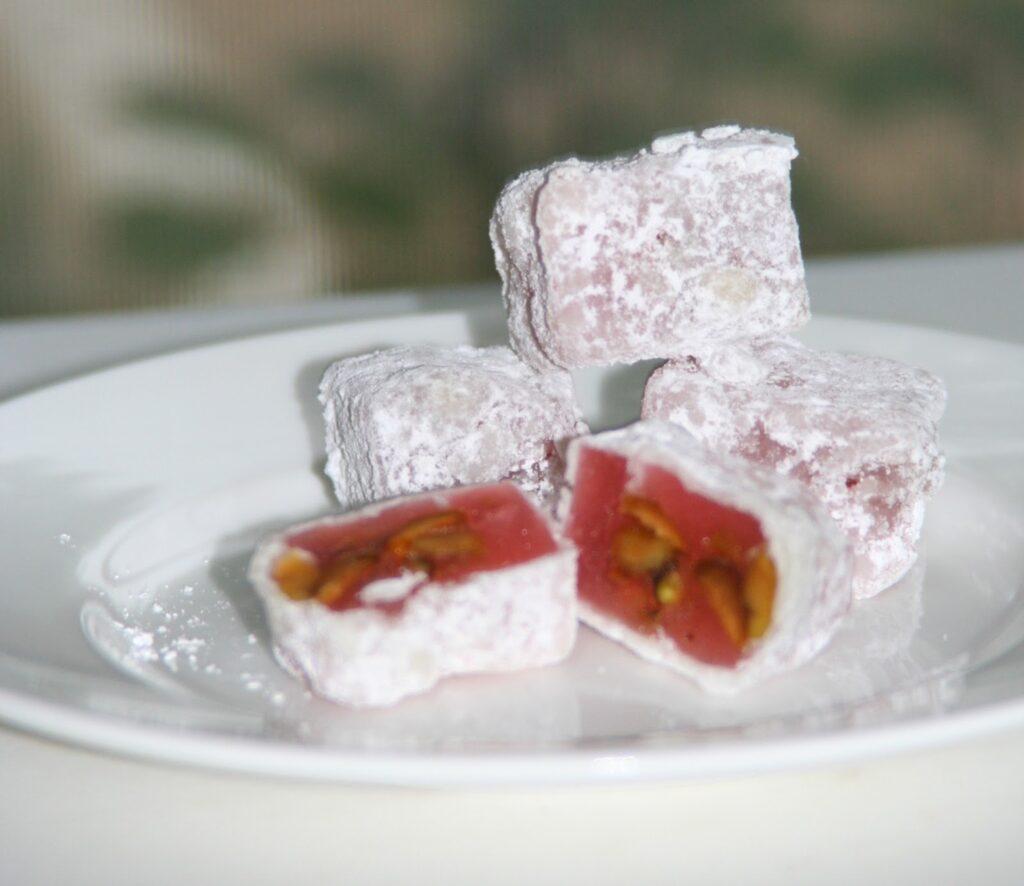
The historical significance of Turkish delight, or “lokum,” is deeply rooted in Turkish culture. Originating in the Ottoman Empire, it was a sweet indulgence enjoyed by royalty and the elite. Its popularity grew, becoming an integral part of Turkish hospitality and celebrations.
Over time, Turkish delight gained cultural importance, symbolizing generosity and warmth. It even found its place in ceremonies and rituals. Today, it stands as a delicious link to Turkey’s rich history, embodying the country’s culinary traditions.
The enduring legacy of Turkish delight highlights its role as more than just a sweet treat, showcasing a cultural connection that spans centuries.
What are the primary ingredients in Turkish delight?
The primary ingredients in Turkish delight are simple yet essential, contributing to its sweet and delightful taste. The key components include
Sugar
Sugar is the primary sweetener, infusing Turkish delight with its characteristic sweetness.
The quality of sugar used can impact the overall flavor, and the careful balance ensures a delightful sweetness without being overly sugary.
Starch
Starch is commonly derived from corn or potatoes.
Starch serves as a crucial component for achieving the soft and chewy texture that defines Turkish delight.
The type and amount of starch used contribute to the consistency of the confection, creating a pleasing chewiness in each bite.
Water
Water acts as a binding agent, facilitating the blending of sugar and starch to create a cohesive mixture.
The addition of water helps achieve the desired consistency, allowing the ingredients to come together during the cooking process.
Which popular flavors and regional variations of Turkish delight should you try?
Rose
Rose-flavored Turkish delight captures the essence of fragrant rose petals, providing a subtly sweet and floral taste. It’s a timeless and elegant choice.
Citrus
Citrus-infused Turkish delight offers a burst of freshness with the tangy notes of lemon or orange. It’s a rejuvenating option, particularly favored in warmer weather.
Pomegranate
Pomegranate-flavored Turkish delight balances sweetness with a hint of tartness, resembling the juicy seeds of the pomegranate fruit.
Mint
Refreshing and cool, mint-flavored Turkish delight provides a palate-cleansing experience. It’s a popular choice for those who enjoy a hint of herbal freshness.
Mixed Nut
Turkish delight with mixed nuts, such as pistachios or hazelnuts, adds a delightful crunch to the soft texture, creating a harmonious blend of flavors and textures.
Lemon
Lemon-flavored Turkish delight imparts a zesty and citrusy kick, awakening the taste buds with its bright and lively flavor profile.
Bergamot
Bergamot-flavored Turkish delight, derived from the aromatic bergamot orange, offers a unique combination of citrusy and floral notes.
Double Roasted Pistachio
This premium variation features Turkish delight generously packed with double-roasted pistachios, providing an indulgent and nutty flavor.
Regional Variations
- Istanbul (Hellenic Influence): Turkish delight from Istanbul may carry flavors influenced by Hellenic traditions, offering a blend of cultural influences in the heart of Turkey.
- Safranbolu: Known for its UNESCO-listed historic sites, Safranbolu is also renowned for its traditional Turkish delight production. The delights from this region often prioritize quality and authenticity in their craftsmanship.
- Antep (Gaziantep): Gaziantep is famous for its pistachios, and Turkish delight from this region often features these premium nuts, creating a distinct regional taste that’s rich and nutty.
How would you describe the texture and consistency of Turkish delight?
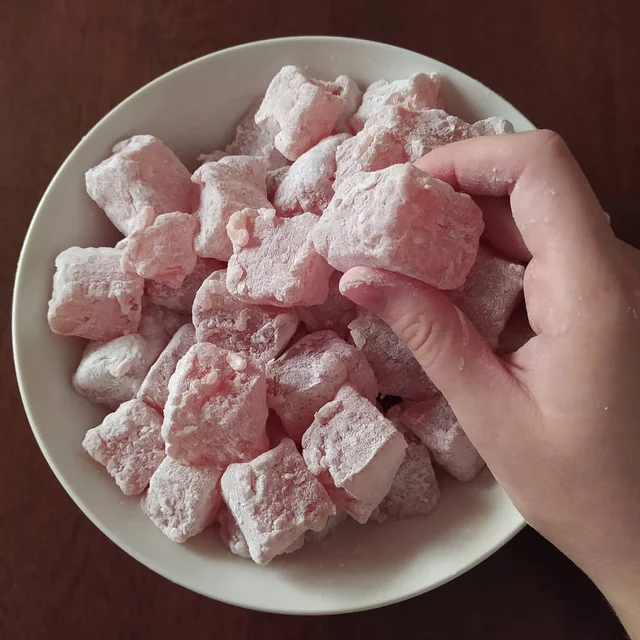
The texture and consistency of Turkish delight are a unique and integral part of its appeal
Soft and Chewy
Turkish delight has a soft and chewy texture that is distinctively delightful. The confection yields with a gentle bite, offering a satisfying chewiness that is neither too dense nor too light.
Smooth and Silky
The surface of Turkish delight is smooth and often slightly powdery, contributing to its silky feel. This velvety quality enhances the overall mouthfeel, making each piece a luxurious treat.
Slight Stickiness
Turkish delight has a subtle stickiness that adds to its charm. It adheres softly to the fingers, enhancing the sensory experience without being overly tacky.
Melt-in-the-Mouth
As you chew, Turkish delight has a tendency to melt in the mouth, releasing its rich flavors and aromas. This characteristic melting quality adds to the overall indulgence of the confection.
Adaptable Consistency
Turkish delight can be crafted to have varying consistencies, from a more firm and jelly-like texture to a softer, almost gelatinous quality. The versatility in consistency allows for a range of preferences to be accommodated.
Balanced Sweetness
The consistency is balanced with the sweetness of the confection. The sugar and starch combination, when carefully calibrated, results in a harmonious blend that doesn’t overpower but rather complements the overall experience.
How to Make Turkish Delight at Home?
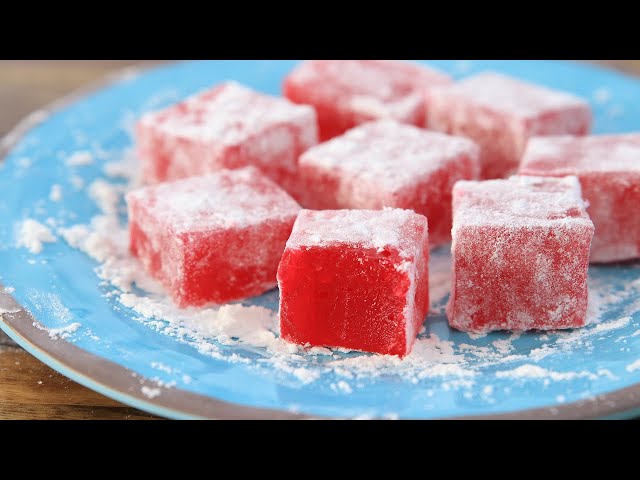
Ingredients
- 2 cups granulated sugar
- 1 cup water
- 1 cup cornstarch
- 1-2 teaspoons flavoring (e.g., rosewater, lemon juice)
- Optional: Chopped nuts (e.g., pistachios) for added texture
Coating
- Powdered sugar
- Cornstarch (equal parts)
Instructions
Prepare the Pan
Line a square or rectangular pan with parchment paper, leaving some overhang for easy removal later. Grease the paper lightly with cooking spray or oil.
Mix Sugar and Cornstarch
In a mixing bowl, combine the sugar and cornstarch. Mix them well to ensure even distribution.
Create the Sugar Syrup
In a saucepan, combine water and the sugar-cornstarch mixture. Stir over low to medium heat until the sugar dissolves completely.
Bring to a Boil
Once the sugar has dissolved, increase the heat and bring the mixture to a boil. Stir continuously to avoid lumps.
Simmer the Mixture
Reduce the heat to a simmer and continue stirring. This process may take 20-30 minutes. The mixture should thicken and turn glossy.
Add Flavoring
Add the chosen flavoring (rosewater, lemon juice, etc.) during the last few minutes of cooking. If using nuts, fold them into the mixture at this stage.
Pour into Pan
Pour the hot mixture into the prepared pan, spreading it evenly. Allow it to cool at room temperature for a few hours or until set. For faster setting, refrigerate.
Coat and Cut
Once set, mix equal parts powdered sugar and cornstarch. Dust the top of the Turkish
delight with this mixture to prevent sticking.
Use a knife coated with a thin layer of oil to cut the Turkish delight into squares or desired shapes.
Presentation
Arrange the pieces on a serving tray, in decorative boxes, or in paper wrappers for a traditional touch.
Storage
Store the Turkish delight in an airtight container at room temperature. Layer with parchment paper to prevent sticking.
Tips
- Be precise with measurements for the best results.
- Stir continuously to achieve a smooth texture.
- Experiment with flavorings and additional ingredients for variety.
- Let the Turkish delight set properly before cutting for cleaner pieces.
FAQ
Is Turkish delight really good?
Yes, Turkish delight is widely appreciated for its unique combination of sweetness, chewiness, and diverse flavors. While taste preferences vary, many find its delightful texture and distinct flavors enjoyable.
Is Turkish delight a sweet or chocolate?
No, Turkish delight is not a chocolate. It is a sweet confection known for its sugar-based composition, starch, and various flavorings, contributing to its characteristic taste.
Is Turkish delight an acquired taste?
Yes, Turkish delight may be considered an acquired taste due to its distinctive flavor profile, which includes ingredients like rosewater and unique textures. Some people instantly love it, while others may need time to appreciate its nuances.
Is Turkish delight like gummy?
Yes, while both Turkish delight and gummy candies share a chewy texture, they differ in ingredients and flavor profiles. Turkish delight is a confection made with sugar, starch, and flavorings, distinct from the gelatin-based gummy candies.
What does Turkish delight smell like?
The aroma of Turkish delight varies based on its flavorings, such as rosewater, citrus, or nuts. It often carries a sweet, floral, or nutty fragrance, contributing to its sensory appeal.
Does lychee taste like Turkish Delight?
No, lychee has a distinct taste, combining sweetness with floral and tropical notes. While there might be some similarity in terms of sweetness, the flavors of lychee and Turkish delight are distinct and not interchangeable.
What is the most popular flavor of Turkish Delight?
Yes, rose-flavored Turkish delight is widely regarded as a classic and popular choice. However, preferences vary, and other flavors like citrus, pomegranate, or nuts are also well-loved.
Why is Turkish Delight so sweet?
The sweetness of Turkish delight comes from its main ingredient, sugar, combined with starch and water. The sweet profile is essential to its character, creating a confection appreciated for its delightful taste.
Final thoughts
On the whole, Turkish delight is a sweet and delightful treat with a unique taste. Its soft and chewy texture, combined with a balanced sweetness, creates a satisfying experience. The flavors, often infused with rosewater, citrus, or nuts, add a special touch.
Whether enjoyed on its own or paired with tea, Turkish delight offers a journey of sweetness that’s both timeless and culturally rich. So, take a bite and savor the joy of this beloved confection, a true delight for the senses.









